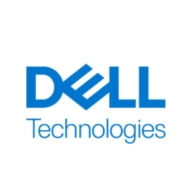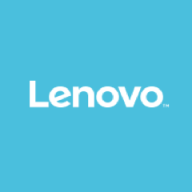

Dell PowerEdge MX-Series and Lenovo Flex System both cater to the enterprise server market. Dell seems to have the upper hand in terms of high-density compute solutions and advanced management tools, while Lenovo leads in user-friendliness and cost-effectiveness.
Features: Dell PowerEdge MX-Series is known for its modular design and scalability, robust virtualization capabilities, and advanced power control tools like iDRAC and OpenManage. It excels in consolidation and resource management, making it optimal for cloud environments. Lenovo Flex System offers a strong storage system and enterprise-level resources, providing high resource consumption capacity before upscaling is needed, and is praised for its stability and user-friendly interface. Its pricing metrics are also attractive.
Room for Improvement: Dell PowerEdge MX-Series could address chip creep issues and improve iDRAC access processes. Interconnectivity with third-party equipment and broader networking options are areas of potential enhancement. Lenovo Flex System needs improvement in integration capabilities and management software and could benefit from more intuitive management tools and increased module flexibility compared to IBM's offerings.
Ease of Deployment and Customer Service: Both Dell and Lenovo systems provide a satisfactory on-premises deployment experience. Dell's customer service receives mixed reviews, indicating some challenges with support consistency. Lenovo's support is generally rated highly as knowledgeable, though reliance on firmware updates can be a source of frustration for both.
Pricing and ROI: Dell PowerEdge MX-Series prices fluctuate based on configuration, necessitating negotiation but providing a solid ROI due to performance and reliability. It is more expensive due to newer technologies like PCIe 5. Lenovo Flex System offers reasonable pricing relative to its quality, with good value and significant upscaling room within its blade server, also delivering compelling ROI by leveraging cloud and virtualization advancements effectively.
| Product | Market Share (%) |
|---|---|
| Dell PowerEdge MX- Series | 13.0% |
| Lenovo Flex System | 4.4% |
| Other | 82.6% |
| Company Size | Count |
|---|---|
| Small Business | 12 |
| Midsize Enterprise | 4 |
| Large Enterprise | 10 |
| Company Size | Count |
|---|---|
| Small Business | 3 |
| Large Enterprise | 7 |
Dell PowerEdge MX-Series servers excel in high-density, high-performance computing, ideal for modular environments requiring efficient rack-scale solutions. They optimize space, power, and cooling while offering scalable architecture for diverse, demanding workloads.
PowerEdge MX-Series offers unmatched efficiency in high-performance computing infrastructures, leveraging a disaggregated architecture in the IR7000 rack. This approach separates power and cooling from nodes, enhancing flexibility and serviceability for AI, HPC, and large-scale virtualization. Featuring the latest processors and advanced interconnects, it supports robust scalability and superior performance, driving businesses to modernize their infrastructure confidently.
What are the standout features?Dell PowerEdge MX-Series is extensively employed for virtualization, data center consolidation, and hyper-converged infrastructures. Widely adopted for storing virtualization on blade servers and handling compute tasks, it is a trusted foundation for diverse workloads like private clouds and scientific computing. Notably effective for data logging in solar power plants and delivering scalable infrastructure where compute and processing speed are critical, without dependence on traditional virtualization platforms.
Flex System is Lenovo’s proven, 2nd generation blade, that efficiently runs your infrastructure applications with up to 80% better density than standard rack server deployments.
We monitor all Blade Servers reviews to prevent fraudulent reviews and keep review quality high. We do not post reviews by company employees or direct competitors. We validate each review for authenticity via cross-reference with LinkedIn, and personal follow-up with the reviewer when necessary.